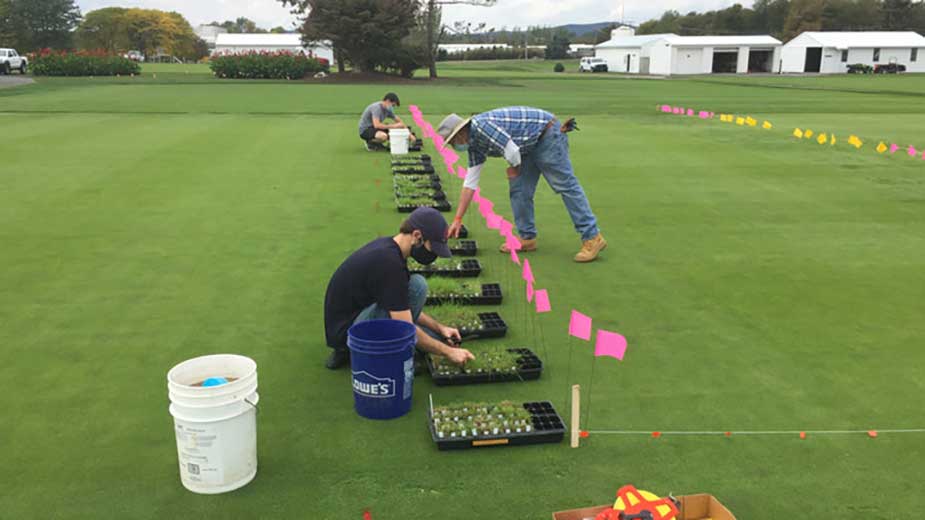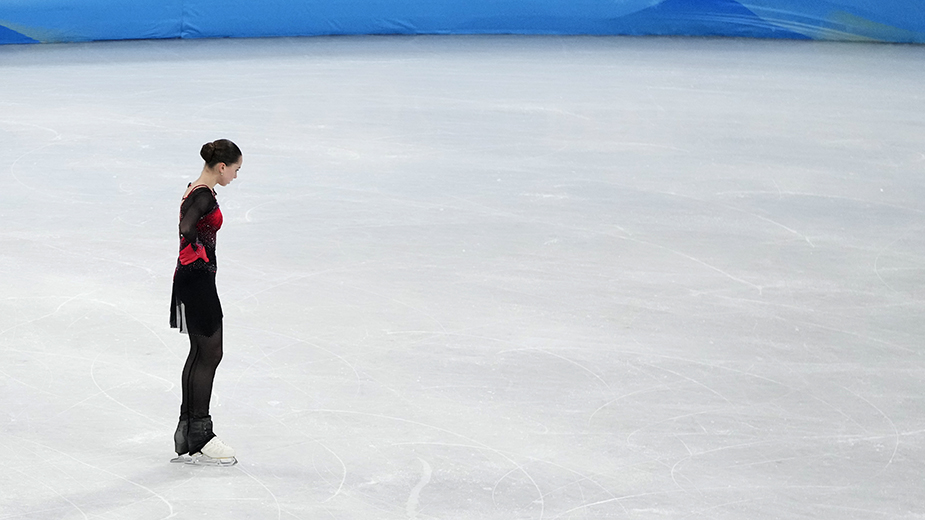Golf Course Grass ‘Remembers’ if It Was Mowed, Penn State Professor Finds
By Jeff Mulhollem, Penn State News
UNIVERSITY PARK, Pa. — Poa annua, or annual bluegrass, a turfgrass species commonly found on golf course putting greens around the world, is able to “remember” whether its parent was mowed or not mowed, according to a new study by Penn State researchers.
The discovery solves a two-decades-old mystery that has vexed David Huff, professor of turfgrass breeding and genetics, whose research trials at the College of Agricultural Sciences‘ Joseph E. Valentine Turfgrass Research Center are aimed at breeding Poa annua to produce seed for greens.
Poa annua is a remarkably versatile grass species with both perennial and annual biotypes, Huff noted. The species can be found as an invasive weed on all seven continents of the globe, including extremely inhospitable locations such as Mount Kilimanjaro and Antarctica. It is valued on greens because of its tenacious quality, persisting in closely mowed, high-trafficked conditions where the most-valued turfgrass species for putting greens – creeping bentgrass – often struggles to survive.
“We learned that mowing Poa annua increases global DNA methylation, a process allowing it to pass on the environmental effects of mowing to its unmowed offspring,” Huff said. “The ability of the grass to adapt to changes in its environment is conferred, in part, by an epigenetic mechanism that modifies the function of the genes and affects gene expression.”
Poa annua’s ability to “remember” – and “forget” – mowing explains why Huff’s efforts to breed the turfgrass species to develop and enhance qualities valued on golf course putting greens repeatedly failed. In 1994, he began breeding Poa annua with the goal of developing a commercial variety for use on golf course putting greens, and the United States Golf Association awarded him funding for about a decade to do this breeding.
“After 10 years or so, I had some beautiful lines, about a dozen elite lines, and I went into seed production,” he said. “But after about two or three generations of seed increase, when we weren’t mowing, just collecting the seed, I lost the dwarf line for the greens that made a beautiful putting surface.”

To Huff’s dismay, the Poa annua grass reverted back to the big, ugly weed form buried in its genetic makeup. The process happened several times.
“I asked myself, ‘What the heck happened?’ At first, I thought my lines must be breeding with weeds in a nearby field,” he said. “We did all kinds of fumigation. We grew the Poa in plastic. Then I put a grad student on the project, and we did some crosses and genetic studies. We found out the dwarf phenotype that we loved so much for the putting green surface is unstable and that’s what led us to this research.”
After extensive genetic analysis and comparison of mowed and unmowed Poa annua clones over several generations, researchers saw that the “stress” from mowing affected the development of the turfgrass. In findings recently published in Crop Science, they reported that they have observed that the transgenerational inheritance of close mowing stress is correlated with heritable patterns of DNA methylation.
“The lack of mowing stress enabled Poa annua to reduce the transgenerational memory of mowing stress, that is, ‘forget’ the memory of mowing stress, presumably by removing epigenetic marks,” said Chris Benson, doctoral candidate in plant biology, who spearheaded the research. “We believe that such transgenerational memory would be further entrenched or relaxed across additional generations of continued or relaxed mowing stress. We think we can use this knowledge to overcome the genetics and produce stable cultivars.”
Poa annua’s transgenerational memory likely originated from the plant’s need to adapt to the stress of grazing animals over eons, Benson pointed out. Such stress can be variable in intensity — for example, less-intense horse grazing versus consistent close cropping by sheep — as well as in frequency depending on animal density. “Poa annua in different regions may have evolved to become adapted to different degrees of grazing pressure,” he said.
Qing Mao, a bioinformaticist with CareDx in Brisbane, Calif., formerly a doctoral student at Penn State advised by Huff, contributed to this research. Mao graduated from the plant biology program.
This work was supported by the United States Golf Association under the Turfgrass and Environmental Research Program; the Pennsylvania Turfgrass Council; the Huck Institutes of the Life Sciences, Penn State; the College of Agricultural Sciences, Penn State; and the USDA National Institute of Food and Agriculture.
Pictured at top: Doctoral candidate Chris Benson (top), David Huff, professor of turfgrass breeding and genetics (middle) and doctoral candidate Matt Sheltra preparing to plant an experiment on a Poa annua green at the Joseph E. Valentine Turfgrass Research Center at Penn State, University Park.IMAGE: PETE LANDSCHOOT
Copyright 2024 The Business Journal, Youngstown, Ohio.



